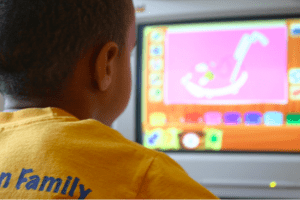As we approach the one year anniversary of the Coronavirus upending American life, it’s a good time to reflect on its potential long term impacts on education. For many across the country, students continue to learn either entirely online or through a hybrid model, combining online schooling with some in-person instruction.

The burden on students, parents, and teachers to keep track of ever-changing schedules is just the tip of the iceberg in terms of the multitude of disruptions wrought by the virus. While transmissions appear to be slowing in some parts of the country, some experts are expressing concern about the effects of a year in quarantine on students.
At the end of every school year, parents and teachers alike worry about students slipping in the summer months. This year, this fear is magnified by the fact that many students have struggled to keep up in an online learning environment. For students who were enrolled in tutoring for reading and writing, online learning has proved to be a poor substitute.
Typically, a student who is falling behind would have access to one-on-one instruction or small groups to help them improve their literacy skills. But for many school districts, this has been a difficult task to replicate virtually. Parents worry that the lack of resources through the school will mean their already struggling student might fall further behind.
Adding to this anxiety, parents feel pressure to teach their children themselves but may lack the time and resources to do so. Particularly for families with limited means or single parent households, the achievement gap can feel more like a canyon.
Inequalities in education have long been a source of anxiety in the United States. In their article, “The Right to Be Literate: Literacy, Education, and the School-to-Prison Pipeline,” Winn, et. al. note that literacy has become “a new civil rights frontier.” In the time of Coronavirus, inequalities in education have widened.
So what do we do? Colorado school districts are recognizing the issues outlined above by beefing up their summer school programs. Students will be able to catch up via in-person instruction and the goal is to have smaller class sizes to address each child’s specific needs.
The resources needed to undo the chaos brought onto the education system by the Coronavirus will likely be massive. But experts believe that children, naturally resilient and curious, will fare just fine in the long run. In the meantime, patience is a friend to everyone.

This was really informative. I struggled with certain academic concepts growing up in various classes. Tutoring and one on one aid from my teachers are what guided me to where I am today. I required a person to sit by my side and talk to me step by step for a while. So, I can only imagine the students like me who struggle constantly with this issue as well. I can’t even imagine how far I’d be behind in middle school stuck in this pandemic. I appreciate school districts trying their best to make resources possible for students I was once like.
I currently work at a public school as an aide, so I thought this was really interesting. We’ve definitely been concerned about our students (who have until recently been doing part-time remote, part-time in person) in how they are handling the online portion of their education.